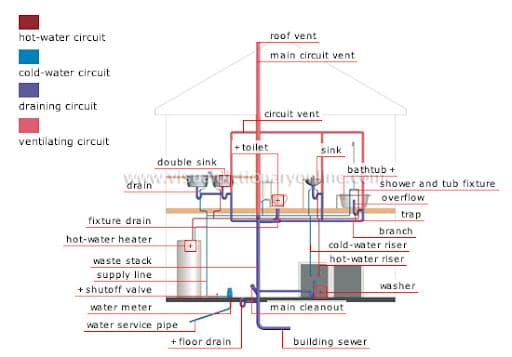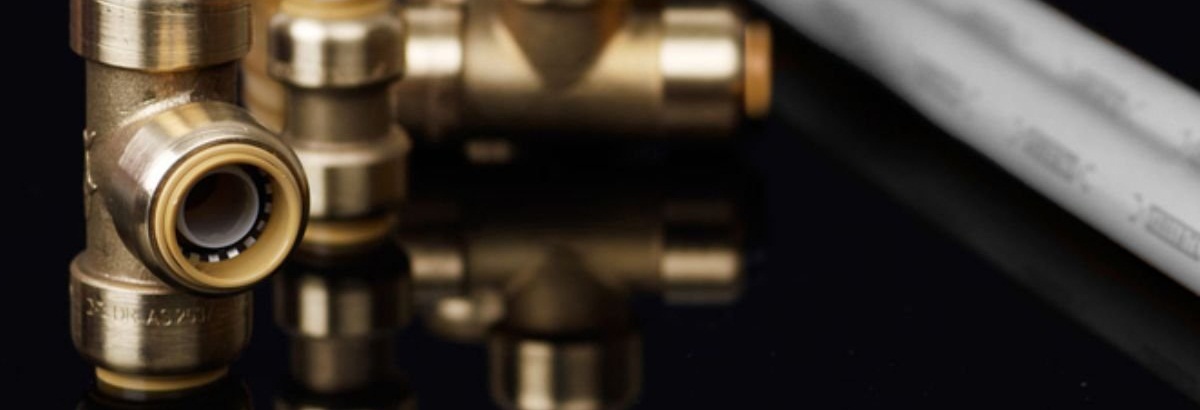How to Understand Your Property's Plumbing System Anatomy
How to Understand Your Property's Plumbing System Anatomy
Blog Article
How do you feel about The Inner Workings of Your Home's Plumbing?

Recognizing just how your home's plumbing system functions is crucial for every single house owner. From delivering clean water for drinking, cooking, and showering to safely eliminating wastewater, a well-kept plumbing system is essential for your family members's wellness and comfort. In this comprehensive guide, we'll discover the intricate network that composes your home's pipes and offer ideas on upkeep, upgrades, and handling typical concerns.
Introduction
Your home's pipes system is more than just a network of pipelines; it's an intricate system that ensures you have accessibility to clean water and reliable wastewater removal. Knowing its components and how they work together can assist you stop pricey repair services and make certain everything runs efficiently.
Fundamental Components of a Pipes System
Pipes and Tubes
At the heart of your pipes system are the pipelines and tubing that lug water throughout your home. These can be made from different materials such as copper, PVC, or PEX, each with its benefits in regards to longevity and cost-effectiveness.
Components: Sinks, Toilets, Showers, etc.
Components like sinks, bathrooms, showers, and bathtubs are where water is made use of in your house. Comprehending exactly how these components link to the plumbing system assists in detecting troubles and intending upgrades.
Shutoffs and Shut-off Points
Valves regulate the circulation of water in your pipes system. Shut-off valves are critical throughout emergency situations or when you require to make repairs, allowing you to isolate parts of the system without interfering with water circulation to the entire residence.
Supply Of Water System
Main Water Line
The primary water line links your home to the metropolitan water or a private well. It's where water enters your home and is dispersed to different components.
Water Meter and Stress Regulator
The water meter steps your water usage, while a stress regulatory authority guarantees that water moves at a risk-free pressure throughout your home's plumbing system, protecting against damages to pipelines and fixtures.
Cold Water vs. Hot Water Lines
Understanding the difference in between cold water lines, which supply water straight from the major, and warm water lines, which bring warmed water from the hot water heater, aids in troubleshooting and planning for upgrades.
Water drainage System
Drain Pipes Pipeline and Traps
Drain pipes bring wastewater far from sinks, showers, and bathrooms to the sewage system or septic tank. Catches prevent drain gases from entering your home and likewise catch debris that can trigger blockages.
Air flow Pipes
Ventilation pipelines enable air right into the drain system, avoiding suction that could reduce water drainage and trigger traps to empty. Correct air flow is necessary for keeping the stability of your plumbing system.
Value of Appropriate Drainage
Making certain appropriate drainage stops backups and water damages. Frequently cleaning drains pipes and preserving traps can stop costly repair services and prolong the life of your plumbing system.
Water Furnace
Types of Water Heaters
Hot water heater can be tankless or traditional tank-style. Tankless heating units warmth water as needed, while storage tanks save heated water for immediate usage.
Upgrading Your Pipes System
Reasons for Updating
Updating to water-efficient fixtures or changing old pipelines can improve water high quality, reduce water expenses, and raise the value of your home.
Modern Plumbing Technologies and Their Advantages
Discover technologies like clever leakage detectors, water-saving bathrooms, and energy-efficient hot water heater that can conserve cash and reduce environmental influence.
Expense Factors To Consider and ROI
Calculate the in advance expenses versus lasting savings when thinking about pipes upgrades. Several upgrades spend for themselves via lowered utility costs and less repair work.
Exactly How Water Heaters Attach to the Pipes System
Understanding how water heaters connect to both the cold water supply and hot water circulation lines aids in detecting issues like insufficient hot water or leaks.
Maintenance Tips for Water Heaters
On a regular basis purging your hot water heater to get rid of debris, checking the temperature settings, and examining for leaks can expand its lifespan and enhance power effectiveness.
Typical Plumbing Problems
Leaks and Their Causes
Leaks can take place as a result of maturing pipes, loose fittings, or high water stress. Dealing with leaks quickly stops water damage and mold growth.
Obstructions and Clogs
Blockages in drains and toilets are frequently caused by flushing non-flushable items or a buildup of oil and hair. Utilizing drain screens and being mindful of what drops your drains can avoid blockages.
Signs of Pipes Troubles to Look For
Low tide stress, sluggish drains, foul odors, or unusually high water costs are indications of prospective pipes issues that need to be attended to immediately.
Plumbing Upkeep Tips
Routine Inspections and Checks
Set up yearly plumbing inspections to capture issues early. Seek indications of leaks, deterioration, or mineral build-up in faucets and showerheads.
DIY Upkeep Tasks
Easy tasks like cleansing faucet aerators, looking for commode leaks making use of dye tablet computers, or protecting revealed pipes in cool environments can avoid significant plumbing problems.
When to Call a Professional Plumbing Professional
Know when a plumbing concern calls for expert knowledge. Trying complicated fixings without proper expertise can lead to more damage and greater repair expenses.
Tips for Lowering Water Usage
Basic behaviors like taking care of leakages quickly, taking much shorter showers, and running complete loads of laundry and recipes can save water and reduced your utility expenses.
Eco-Friendly Pipes Options
Consider sustainable pipes products like bamboo for flooring, which is durable and green, or recycled glass for kitchen counters.
Emergency situation Readiness
Actions to Take During a Plumbing Emergency
Know where your shut-off valves lie and just how to switch off the supply of water in case of a ruptured pipeline or significant leak.
Value of Having Emergency Situation Calls Handy
Keep get in touch with info for neighborhood plumbings or emergency situation solutions conveniently offered for fast response during a plumbing dilemma.
Ecological Influence and Preservation
Water-Saving Components and Devices
Mounting low-flow taps, showerheads, and commodes can considerably minimize water use without compromising efficiency.
Do It Yourself Emergency Situation Fixes (When Suitable).
Momentary solutions like using air duct tape to spot a dripping pipeline or positioning a bucket under a dripping faucet can lessen damage up until a specialist plumbing professional arrives.
Conclusion.
Understanding the makeup of your home's plumbing system empowers you to preserve it efficiently, saving money and time on repair work. By adhering to normal maintenance routines and staying informed about modern pipes technologies, you can ensure your pipes system runs effectively for years to come.
Exploring Your Homes Plumbing Anatomy
Water Supply System
Main Water Line: This is where water enters your home from the municipal supply or a private well. Water Meter: Typically located near where the main water line enters the property, it measures the amount of water used. Shutoff Valve: It s crucial to know where this is in case of emergencies. It allows you to turn off the water supply to the entire house. Pipes and Fittings: These distribute water throughout your home. Materials can include copper, PVC, or PEX. Drain-Waste-Vent (DWV) System
Drains: Located in sinks, showers, and tubs, these carry wastewater away. Traps: U-shaped pipes under sinks that hold standing water, blocking sewer gases from entering the home. Vents: Pipes that lead from the DWV system to the outside, preventing vacuum formation and allowing gases to escape. Sewer Line: Carries all wastewater from the home to the municipal sewer system or a septic tank. Fixtures and Appliances
Sinks, Toilets, and Showers Dishwashers and Washing Machines Water Heaters Maintenance Tips
Regularly check for leaks in exposed pipes and around fixtures. Inspect the water heater annually for signs of wear. Clean drains and traps to prevent clogs and odors. Know how to shut off water to individual fixtures. When to Call a Professional
Major leaks or burst pipes Installation of new pipes or fixtures Septic tank issues Remodeling projects that involve plumbing changes Conclusion
Understanding the anatomy of your home's plumbing is key to maintaining a functional and efficient system. Regular checks and knowing when to call in the experts can save you time, money, and stress.
https://www.mavyn.com/blog/exploring-your-homes-plumbing-anatomy

I came across that piece of writing on while scouting around the internet. Enjoyed our write-up? Please quickly share it. Let another person check it out. We recognize the value of your readership.
Start Now Report this page